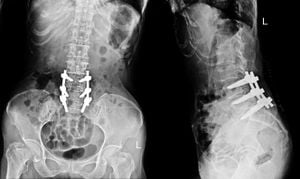Wearable technology has rapidly evolved, especially with the emergence of advanced sensory materials. A recent study introduces semi-auxetic piezoresistive textronic sensors, which combine innovative design and function to create comfortable and highly sensitive wearable devices.
This development marks a significant step forward for wearable sensors, which are pivotal for applications ranging from health monitoring to smart textiles. Traditional sensors often struggle with trade-offs between flexibility, comfort, and sensitivity, leading researchers to explore new structural properties like auxeticity—a fascinating phenomenon where materials expand perpendicularly when stretched, counter to typical material behavior.
Researchers have unveiled how these semi-auxetic sensors can improve the dynamism of wearable tech. By creatively integrating stretchable bands as core substrates for piezoresistive sensors, the researchers successfully created structures capable of responding dynamically to mechanical pressures, resulting in impressive sensitivity levels.
Highlighting the versatility of these sensors, the study indicates their compatibility with multiple applications such as yoga straps, driving safety belts, and therapeutic aids. With the highest recorded sensitivity at -4.8 and auxetic behavior peaking at -14.1, the significance of tuning these materials' properties is underscored to optimize their performance for specific needs.
"A mathematical model revealed an inverse relationship between auxeticity and sensitivity, underscoring the importance of tuning these variables to optimize the sensor’s design for specific applications," the authors noted, capturing the delicate balance required between these attributes.
To construct these sensors, the researchers utilized electromechanical analysis, adjusting stitching lengths and configurations to assess their impact on performance. An increased length of stitching directly affected both the gauge factor and Poisson’s ratio—a focus of their tests to achieve optimal efficiency.
The study describes how the sensors excel not just through advanced materials, but also via design solutions enabling significant stretchability and responsiveness under varying conditions. This capability is particularly valuable for applications needing precision monitoring without compromising user comfort.
"This type of piezoresistive textronic is suitable for applications such as yoga straps, driving safety belts, compression bandages, and breathable belly belts for pregnant women," the researchers emphasized, reflecting on the vast potential for integrating these materials across various industries.
Despite exciting findings, the researchers also acknowledge challenges presented by balancing the goals of auxeticity and sensitivity. Achieving high performance across multiple applications may require careful consideration of these properties, as users’ needs continue to evolve.
The sensors have shown promise under various strain conditions during testing, with consistent performance over long durations, making them suitable for dynamic applications. The durability combined with high sensitivity and comfort positions semi-auxetic piezoresistive textronics as leading contenders for the next generation of wearable technology.
Overall, this study not only presents valuable data supporting the use of semi-auxetic piezoresistive textronic sensors, but it also opens up pathways for future exploration within the field of smart textiles. By continuing to refine these properties, the technology can adapt to various fields, leading to smarter and more responsive wearable solutions.



